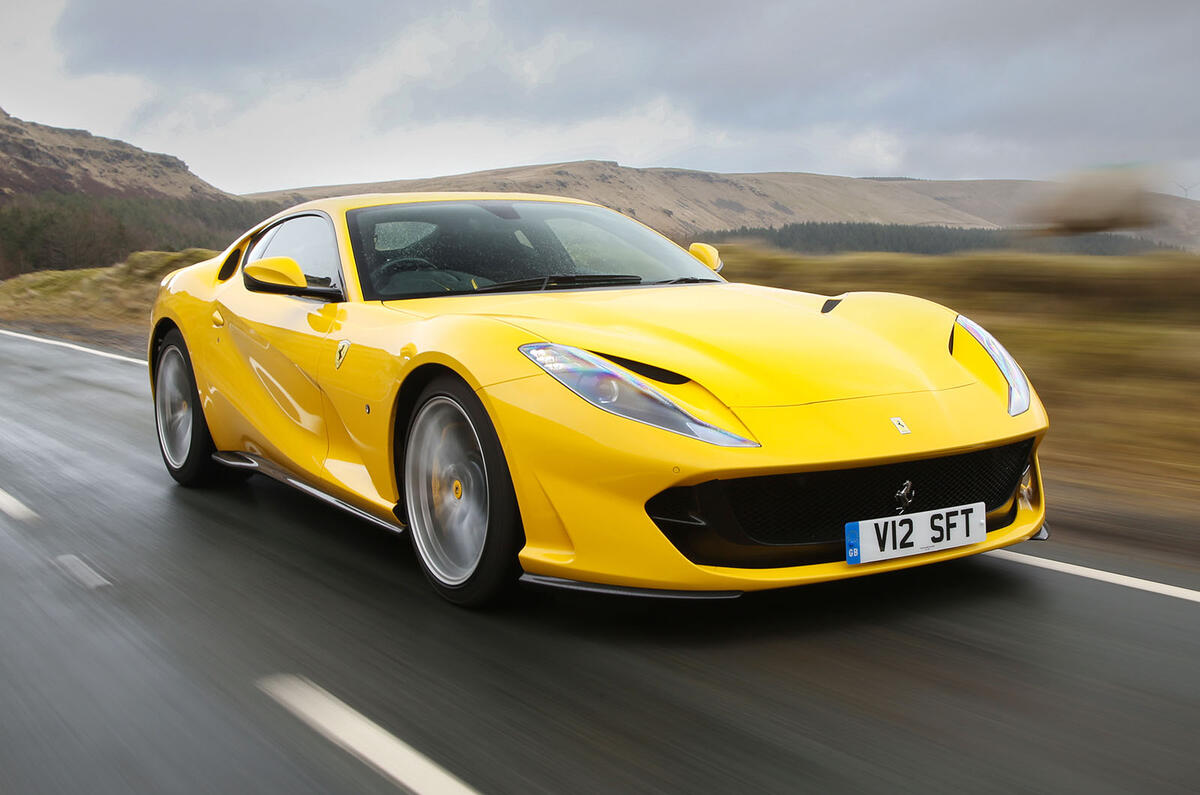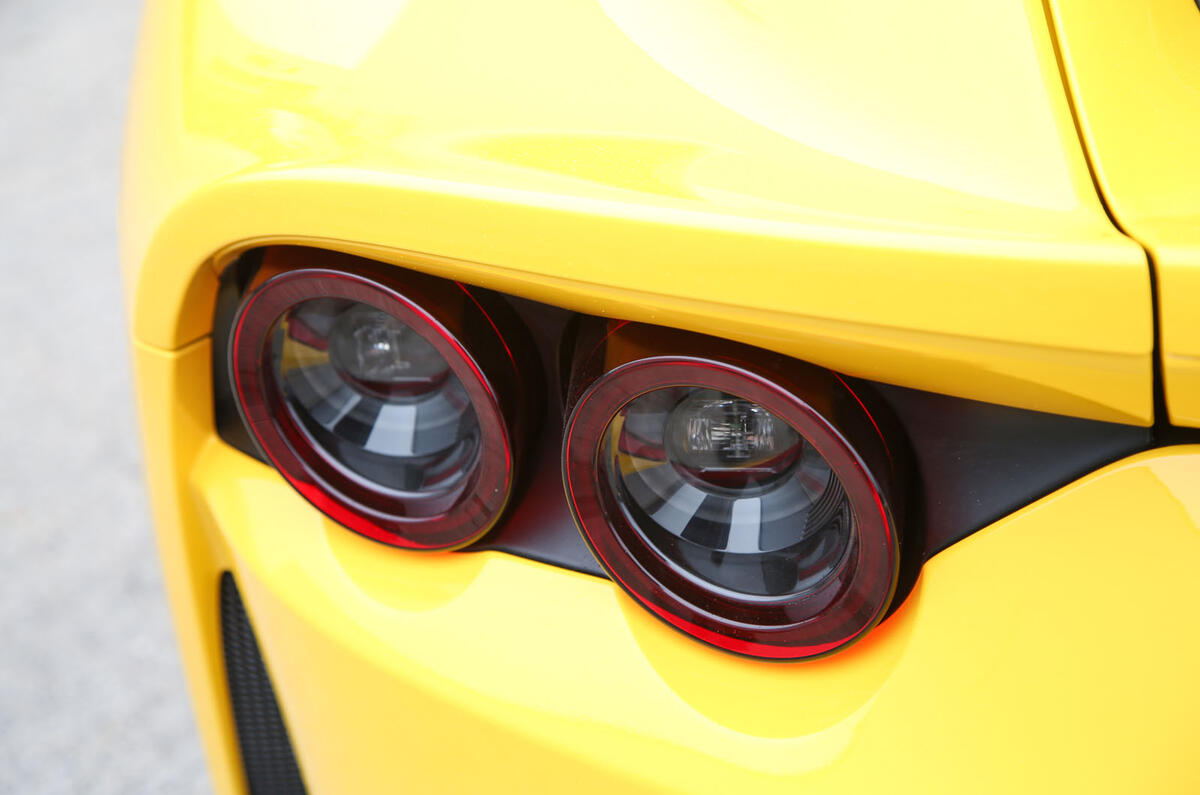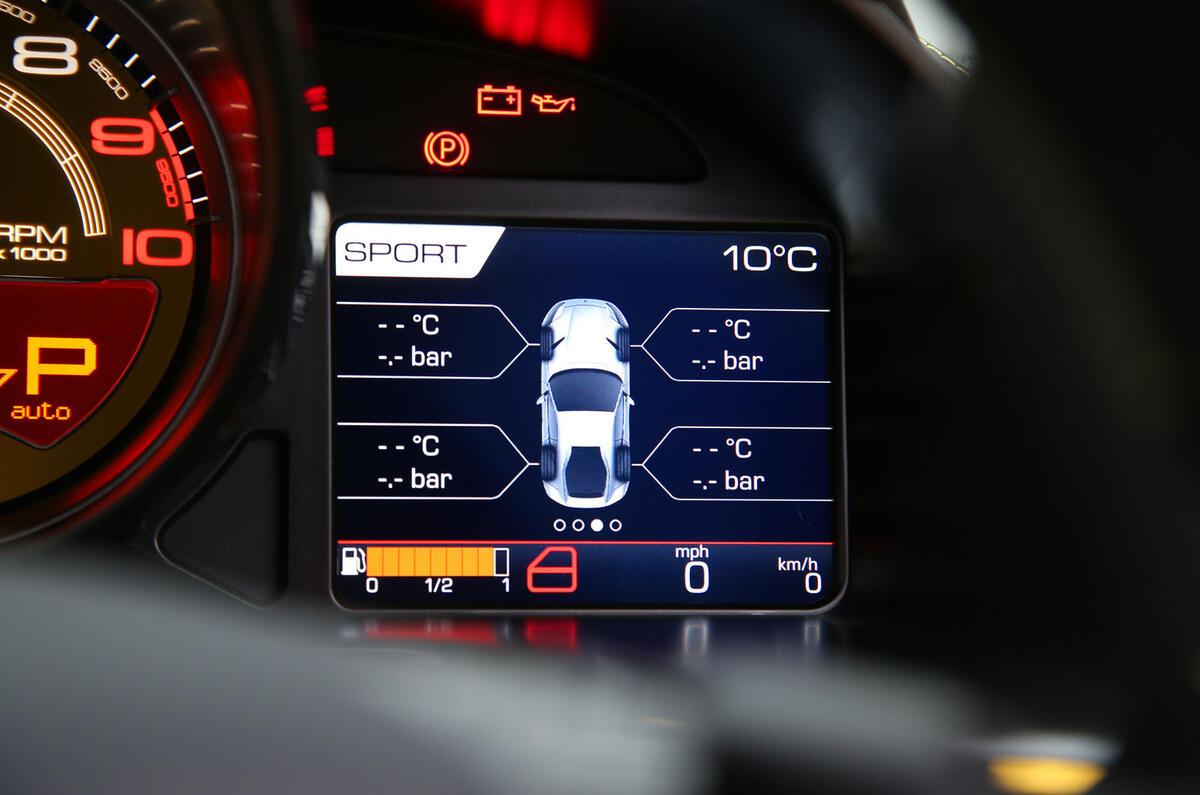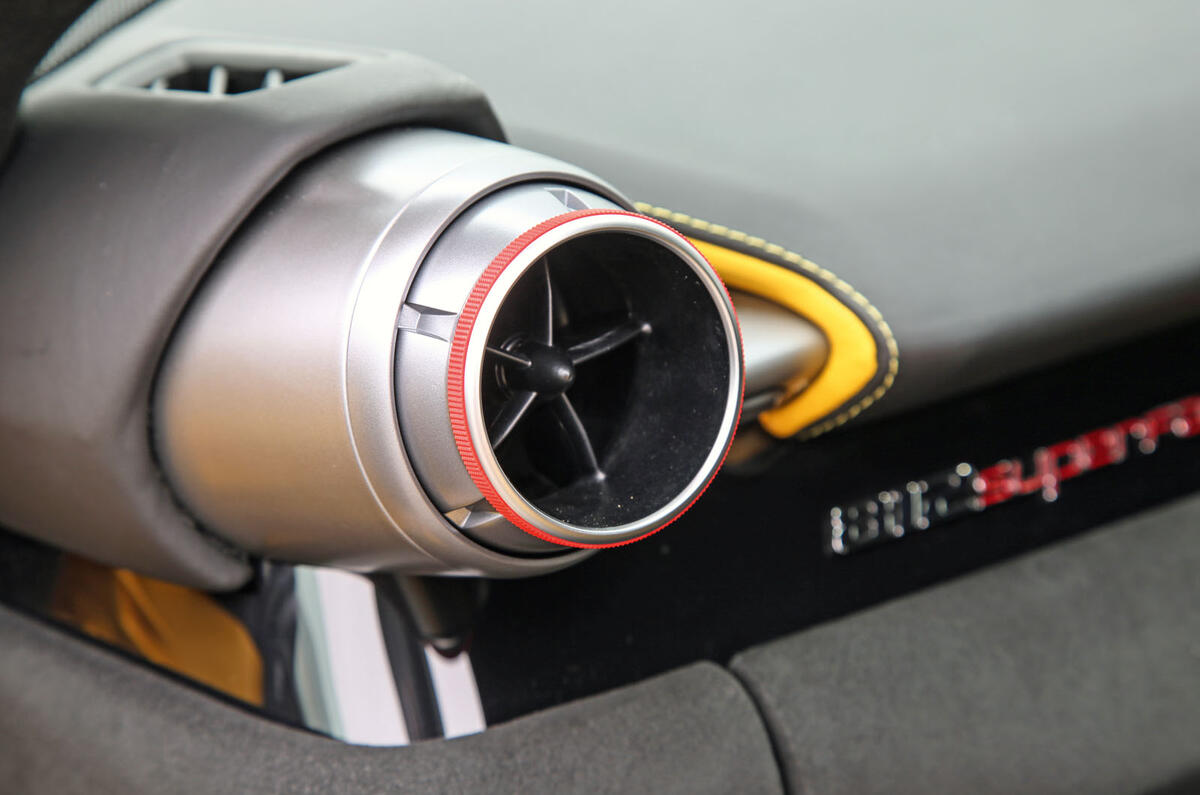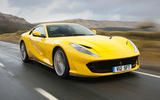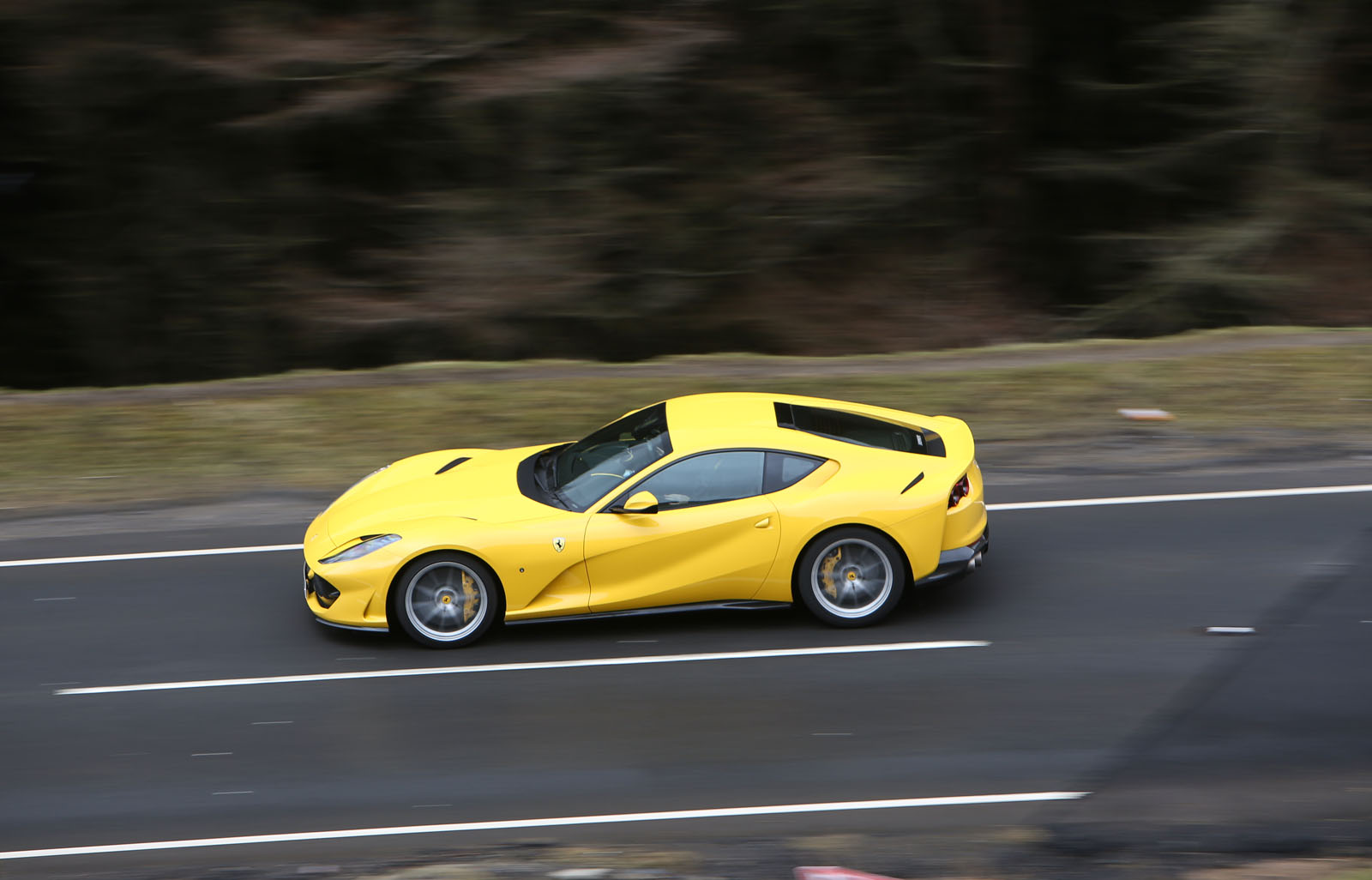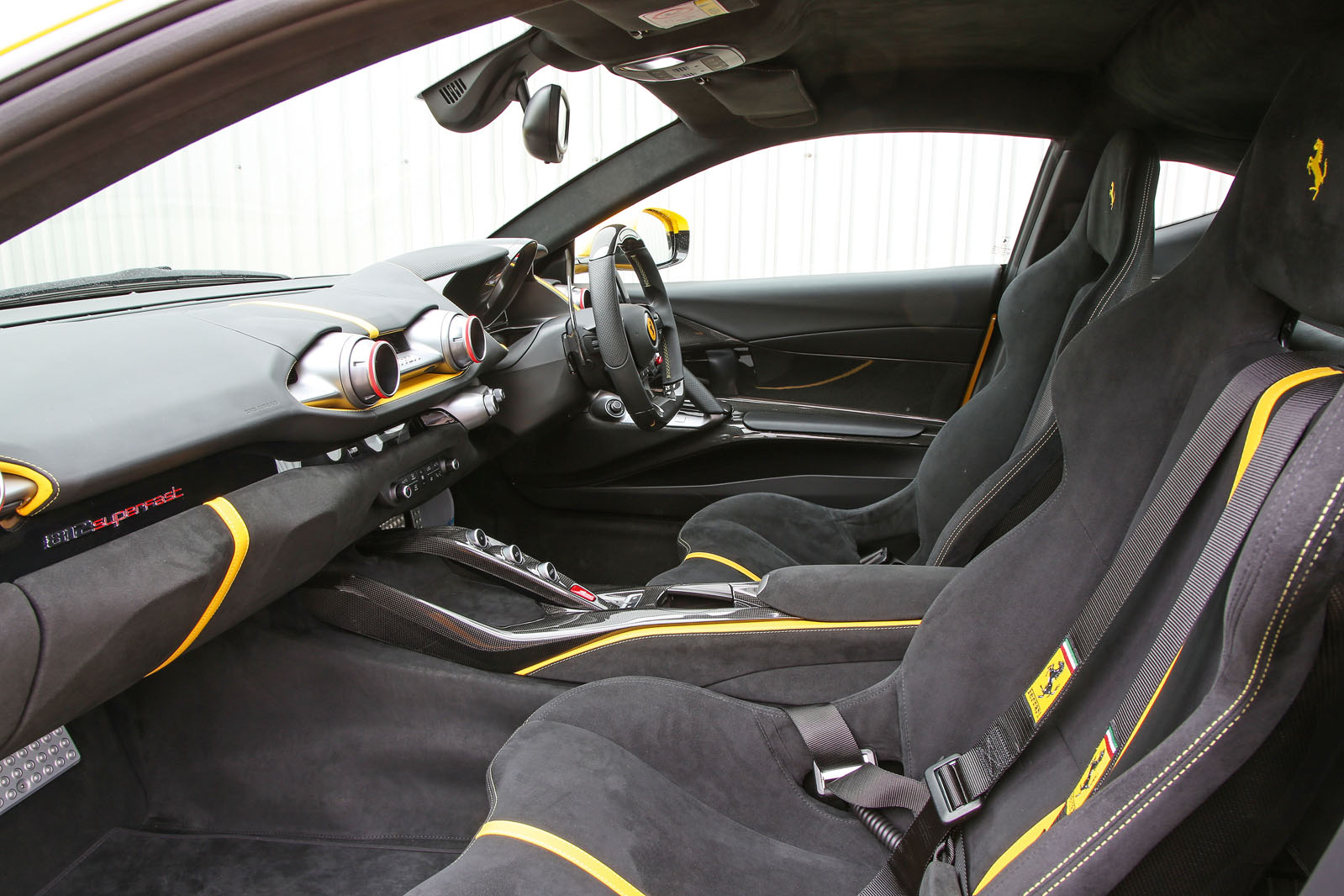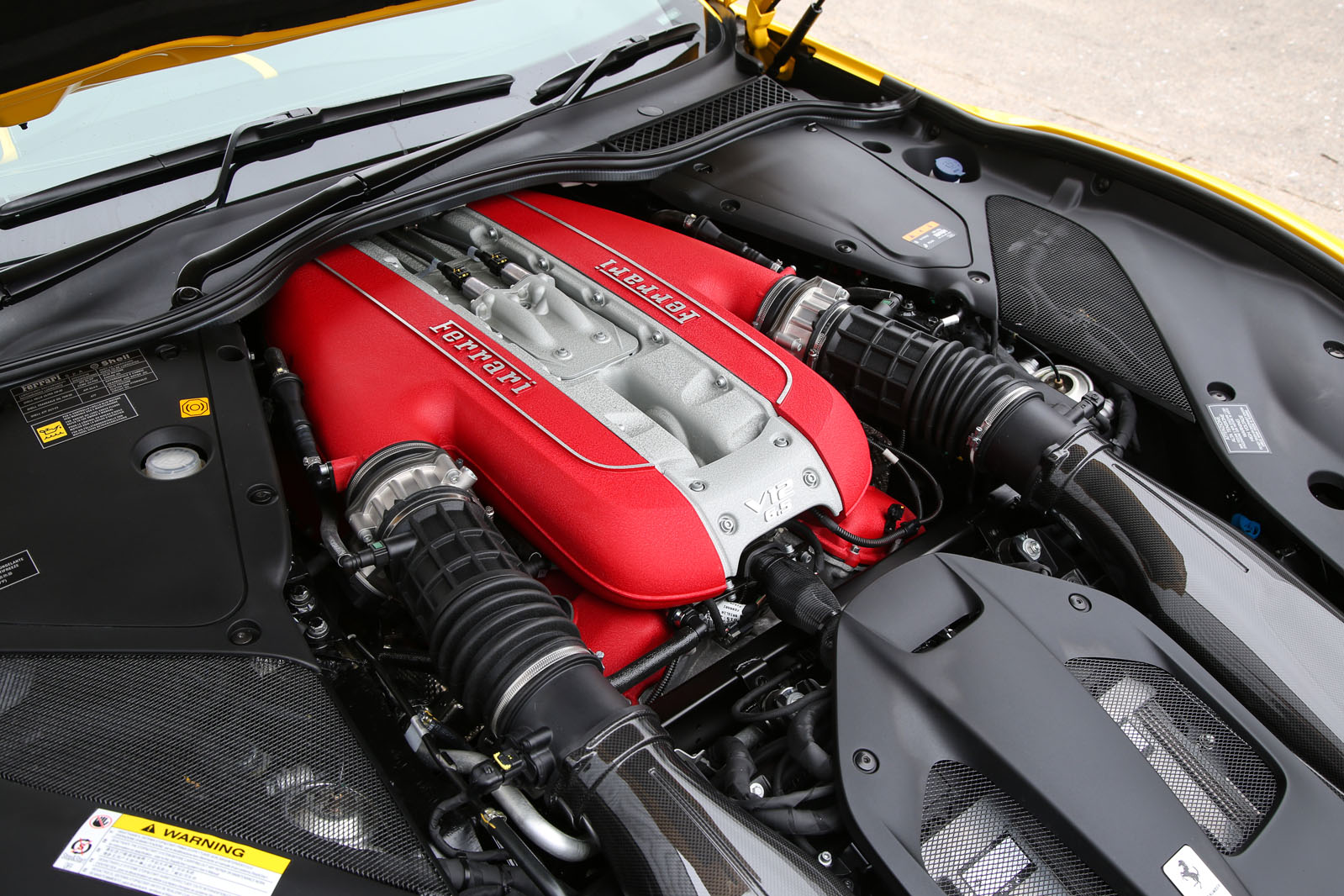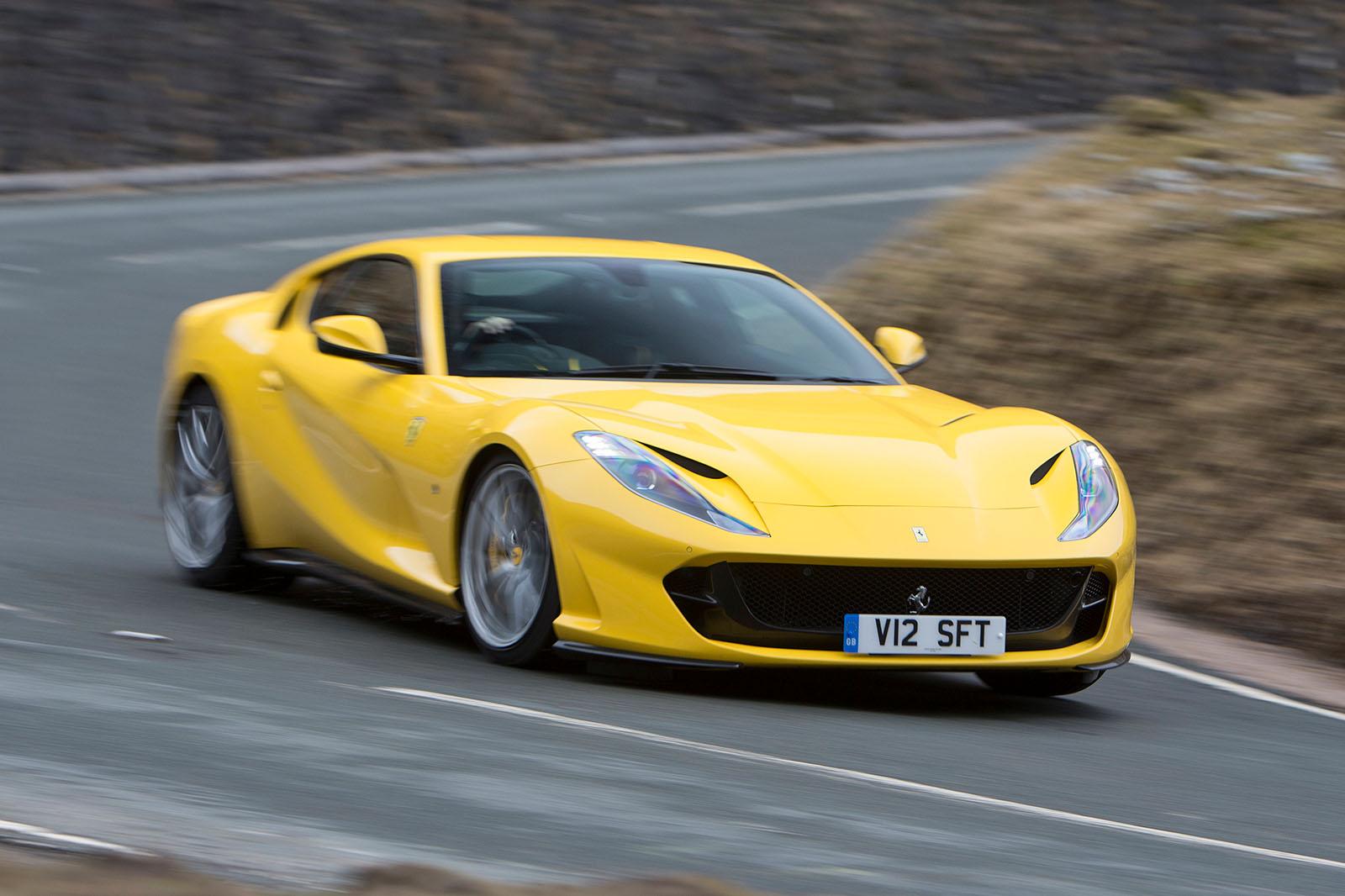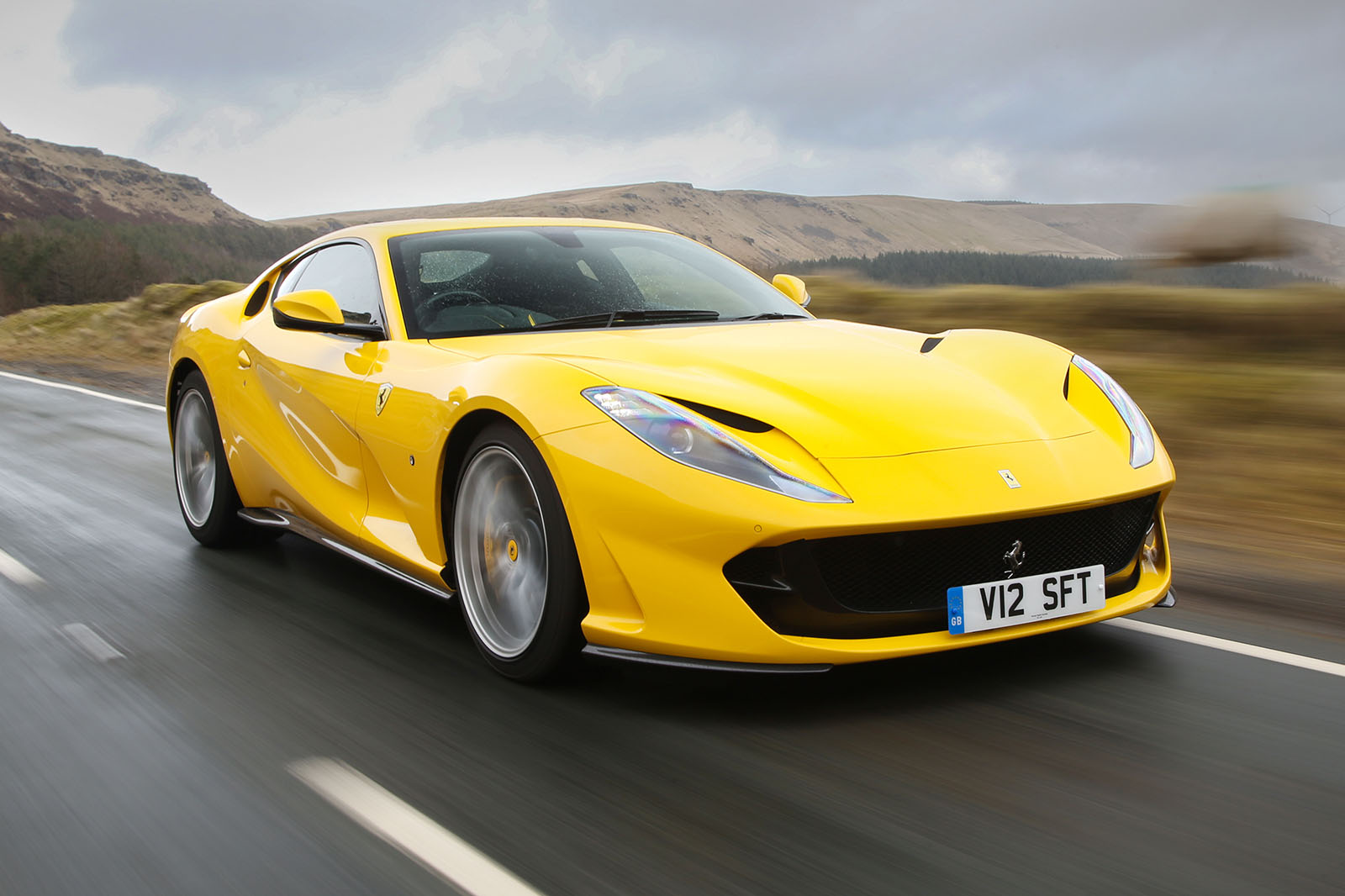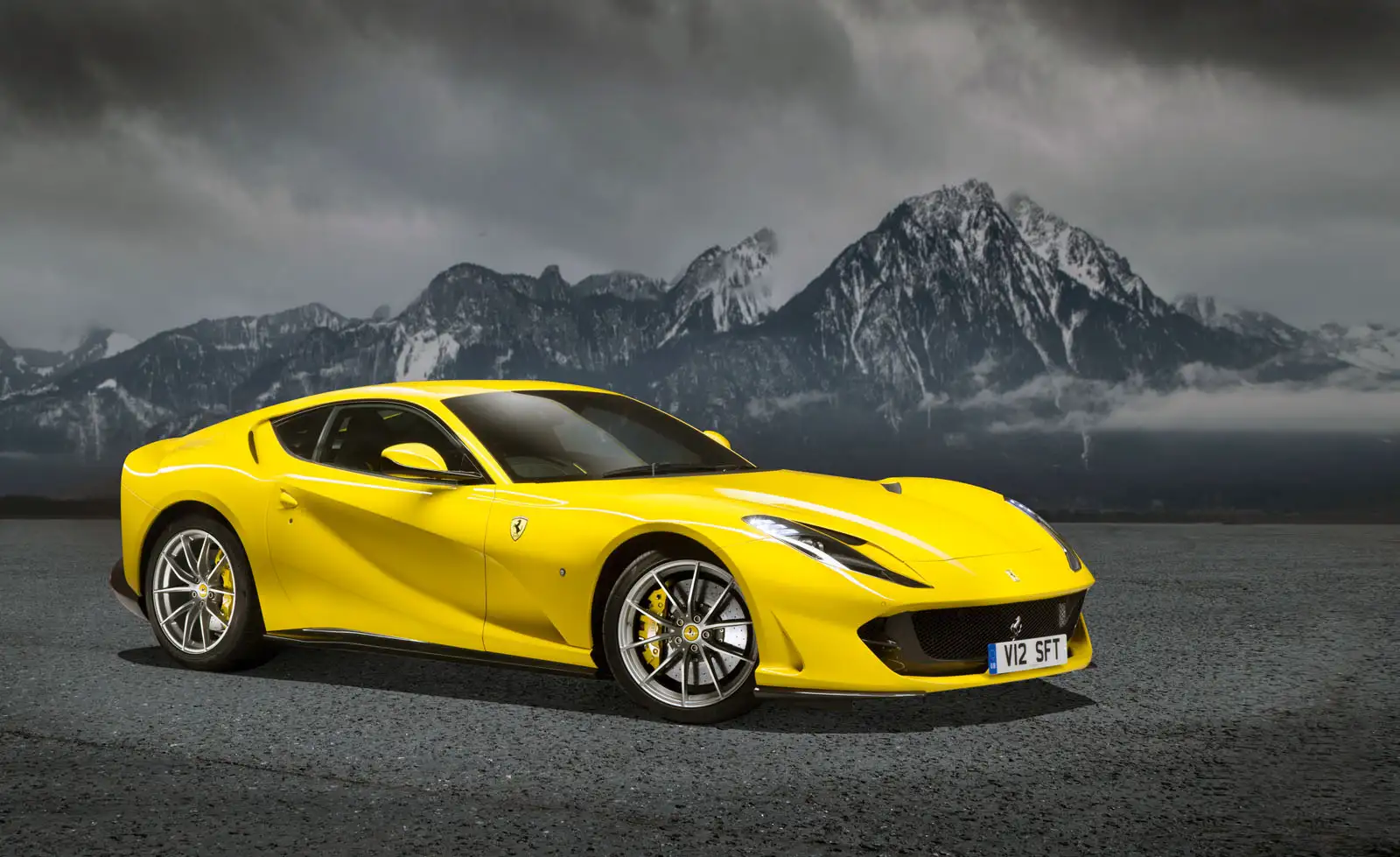The 812’s driving position remains low and recumbent even by the Super GT class’s fairly low-slung standards. In front of you there is, just as there was in the F12, a suitably dominant central analogue rev-counter flanked on each side by a colour instrument display screen.
The car’s already-busy steering wheel boss has had a light redesign and a couple of buttons added to it (for the voice-activated control system and telephone). And yet, because the controls you use most often on it (turn indicators, wipers, headlights) have been enlarged, they’ve become a touch easier to find without looking and without fumbling around for too much.
The wider dashboard looks a touch leaner and more sculpted and, unusually for what’s effectively a mid-life facelift, it features one less jet-exhaust-style air vent. Lower down, the volumes of the car’s extruded-style centre console have been reduced, and the bridge of carbonfibre on which the car’s transmission and hazard warning light controls are carried is slimmer and easier to reach beyond if you’ve put something in the slim cubby behind it.
Wider cabin storage space is fairly scant, but the car’s door pocket will just about accommodate a wallet, phone or water bottle. There is a usable cupholder too. For a while, you can certainly convince yourself that more thought than you might expect of Ferrari has been invested in good ergonomic layout and sensible ease-of-use in the 812.
That is, at least, until the sun comes out and you realise that the ‘dayglow’ yellow contrast leather on the dashboard (it’s optional, mercifully) reflects in the windscreen to distracting extremes. Or until you try to set a destination into the navigation for the first time and, five minutes later, you’re still trying. Then again, perhaps a Ferrari needn’t be that easy to use.
Ferrari’s ‘infotelematic’ infotainment system has been updated for the 812, with a new control regime and new navigation mapping, as well as eight times more processing power than the F12’s system had. Presenting the system inside two 5.0in screens inside the instrument binnacle continues to impose limitations on usability, however.
Despite the revisions to Ferrari’s menus, we found the car’s mapping hard to orientate to our liking and to follow. Customers can delegate control of the audio system to the passenger by optioning Ferrari’s 8.8in passenger display (£3360), through which you can manage and shuffle audio sources.
Apple CarPlay is equally expensive (£2400) but, as a way of avoiding Ferrari’s own navigation system, it’s advisable to have it.
Also available is an evolved telemetry system derived from the one aboard the LaFerrari, and a highend audio system with 12 speakers and a 1280-watt amplifier. The car’s standard audio system quality is respectable if unspectacular.
For carrying space, the 812 is exactly as the F12 was: there’s a boot big enough for one large case or a couple of smaller holdalls, plus a good-sized shelf behind the seats with a couple of securing straps. This is, in short, probably every bit as practical a car as it needs to be to effectively serve a touring brief.


